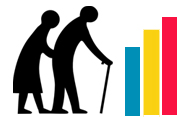A Review of the Iran's elderly status according to the census records
DOI:
https://doi.org/10.31661/gmj.v5i1.397Keywords:
Elderly Status, Gerontology, IranAbstract
For many reasons, the elderly population in Iran is considered a growing phenomenon. An accelerated decline in birth rate in the past two decades, medical-health advances, and increased life expectancy are among the major reasons. Based on the definitions of the Country’s Population Index, Iran's elderly population, with a growth rate of 3.9% compared to the total population growth (2.29%) between 2007 and 2012 has reached to the elderly population of 8.26% in 2012, which puts Iran among countries with aging populations. Now, Iran's elderly population is 6205998 people, including approximately 48.70% aged men and 51.30% aged women. Iran, based on the age criteria of the population structure, is now faced with the aging phenomenon, and since this phenomenon encompasses health, economic and social consequences, as well as service requirements, elderly population of Iran should be comprehensively and continuously evaluated so that the health and medical officials could deal with the incident with proper planning and meet the needs of this group of the society. [GMJ.2016;5(1):1-6]








